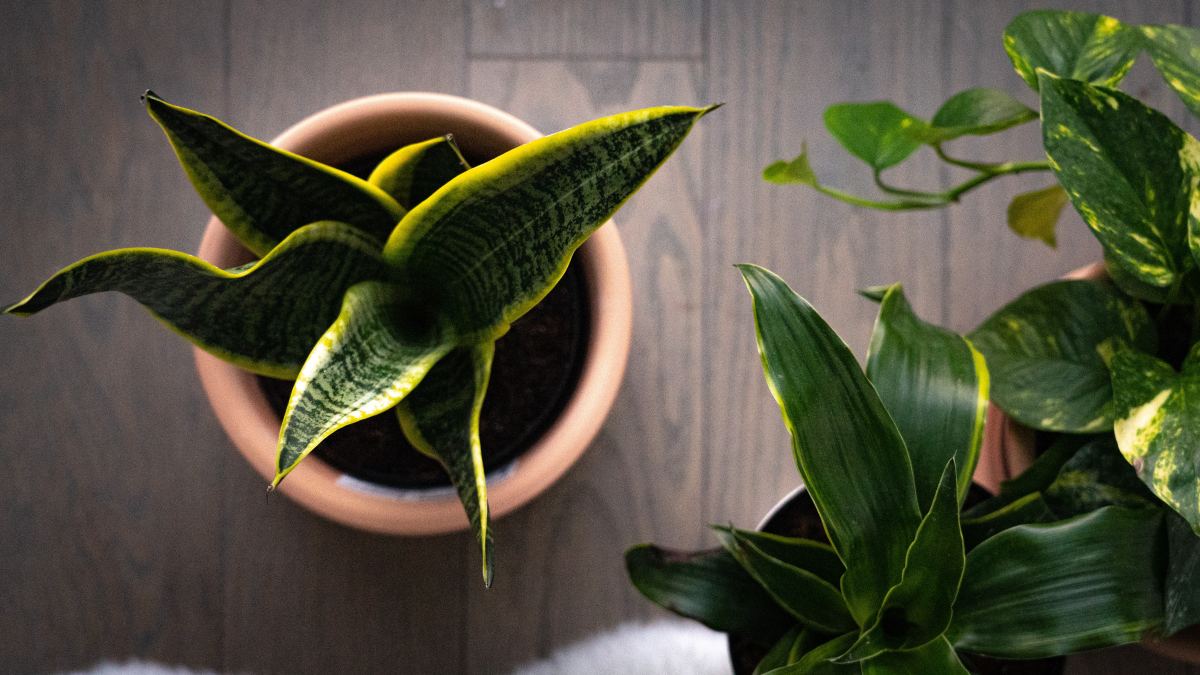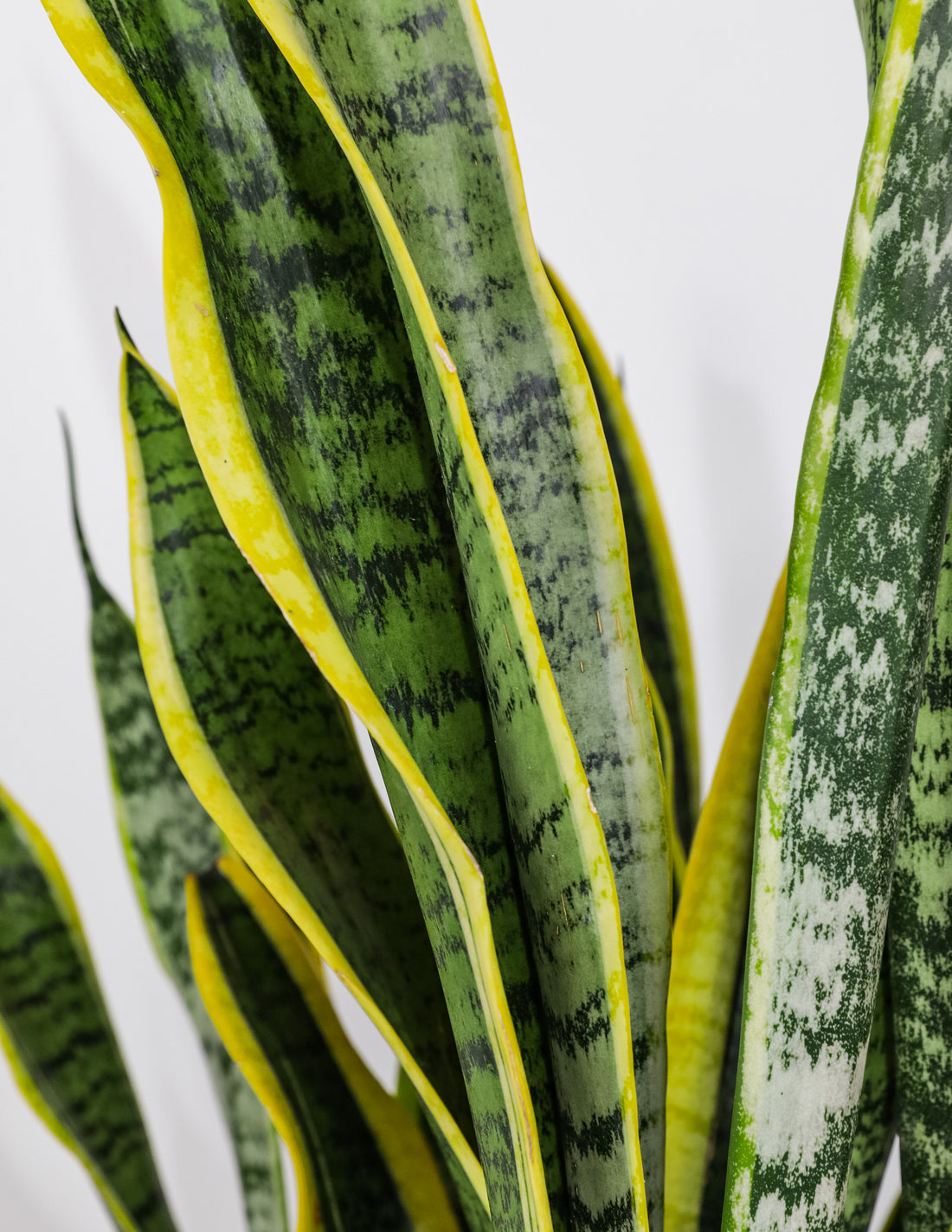The smart Trick of Snake Plant Leaves Turning Yellow That Nobody is Talking About
Table of ContentsThe Best Strategy To Use For Snake Plant Leaves Turning YellowNot known Facts About Snake Plant Leaves Turning YellowFacts About Snake Plant Leaves Turning Yellow UncoveredThe Best Strategy To Use For Snake Plant Leaves Turning YellowEverything about Snake Plant Leaves Turning Yellow
If overwatering in snake plants is not dealt with, the yellow spots of your mother-in-law's tongue plant will certainly turn dark brownish or black. To dismiss any kind of other sources of snake plant fallen leave yellowing, remove the plant from its pot and examine the origins to see if they're soaked and have a nasty scent.Just the fallen leaves encountering the home window will certainly turn yellow for indoor serpent plants if photodamage is the issue. Roots have a higher probability of melting when there is excess plant food and nutrients in the dirt. This then interferes with the consumption of water and essential nutrients, triggering the mother-in-law's tongue plant to stress and place yellow fallen leaves.
Here's how to conserve a snake plant that's turning yellow: Quit irrigating your serpent plant up until the soil dries out up completely if the yellowing is due to overwatering. Return to watering, however not greater than once per week. As a guideline of thumb, avoid sprinkling your snake plant until the leading 2 inches of the soil feel dry.

This will certainly aid to enhance water drainage prices, taking into consideration the heat and sunshine problems throughout the day. Snake Plant Leaves Turning Yellow. Appropriate drain entails using a fast-draining dirt mix and an expanding pot with drain holes at the base. It is best to utilize a soil mix that consists of perlite and coarse sand for fast water drainage
Snake Plant Leaves Turning Yellow for Beginners
There's a silver cellular lining as you can grow new plants by proliferating the few continuing to be leaves that are still healthy. References.
Also, bugs, disease, overfeeding, absence of some nutrients, or being rootbound are possible reasons. Allow us currently look at each of these reasons. We mean to provide you usual indications related to each reason and what to do. Water is important in soaking up nutrients required for chlorophyll. Snake Plant Leaves Turning Yellow. Lack of water triggers the decomposition of chlorophyll.
Without water, your plant can not take in the mineral, some vital for chlorophyll manufacture. Therefore you may observe some yellowing or discoloration. Snake plants enjoy a moist, not soggy, and you should not allow the potting mix to dry out totally for a long period of time. We suggest sprinkling your snake plant after the dirt dries completely or the majority of it is dry.
A significant one may trigger overwatering, and if it is also small, your plants will certainly dry out rapidly. When watering, fill the soil up until excess water comes from drainage openings. Put any type of water that accumulates on the dish. Lastly, never ever follow a snake plant watering session. Instead, constantly feel to ensure the potting mix is dry at the very least half-down the pot.
6 Easy Facts About Snake Plant Leaves Turning Yellow Described
Otherwise, offer some leading watering. Get a harsh price quote on just how commonly you water your serpent plant and set a suggestion to prevent overlook. Before watering, first, feel the dirt with your finger. Light is needed for the biosynthesis of chlorophyll in all flowering plants. Also a lot will deteriorate chlorophyll.
In warm summertimes or throughout warm waves, take your plants to cooler areas. Don't put your plants near residence heating system vents, radiators, fireplaces, or anything that emits warmth.
A lack will certainly trigger in-between blood vessels yellowing on young leaves. When it is doing not have, plants build up nitrates however fall short to utilize them to make healthy proteins.
Despite the fact that snake plants have a record for being nearly impossible to kill, they nevertheless experience a reasonable share of issues. You are not the only one that has seen that your serpent plant's fallen leaves are turning yellow. Snake Plant Leaves Turning Yellow. We will certainly examine the factors serpent plant leaves turn go to these guys yellow and just how to handle it
Rumored Buzz on Snake Plant Leaves Turning Yellow

A wet container will certainly evaluate significantly heavier than a dry pot, so at some point, you should have the ability to determine how completely dry your plant is based upon the mass of its container. Snake plant leaves may end up being yellow if you let your plant dry, after that wait until the dirt is entirely dry before rewatering.
You require to consider more than simply how usually you water snake plants. You additionally must consider what takes place to the fluid when it is positioned in the pot. After watering your click over here now plant, you ought to not let the roots stick around in water for a couple of days since this can cause origin rot.

The Best Strategy To Use For Snake Plant Leaves Turning Yellow
You only require to provide adequate supply and make sure correct water drainage to enable the added water to drain pipes out. Not way too much neither insufficient; there will be an ideal atmosphere for fungis health problems if there is any type click for info of standing water. The snake plants can be sprinkled every 2 to six weeks.
After positioning them in the early morning sun, you will certainly see that snake plants' growth price would certainly enhance and show up much healthier. Nevertheless, placing them in the exterior morning sunshine will require more water, so once per week suffices. If the area receives extreme sunlight and the surface feels dry, you can water them twice per week.